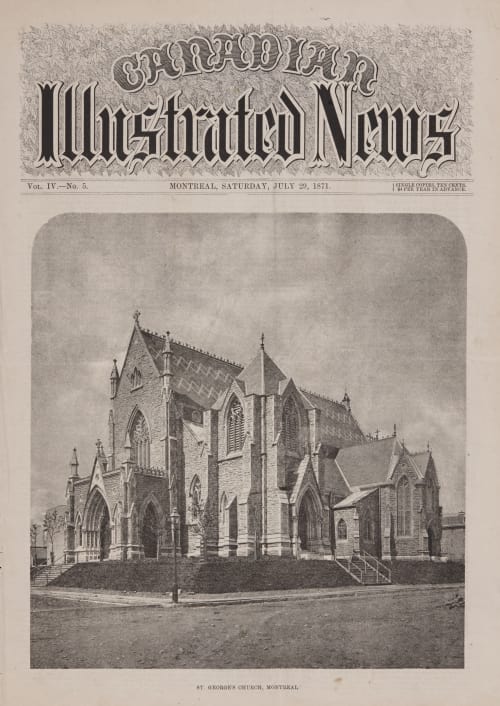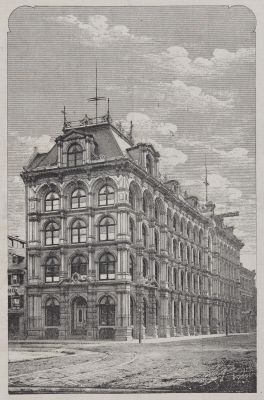
Title
St. George’s Church, MontrealArtist
UnknownPublication
Canadian Illustrated NewsDate
1871Process
LeggotypeAtelier
Leggo & Co.Image Size
24.1 x 23.1 cm
This magazine was notable for being the first in the world to consistently produce photographs at a successful rate. This was made possible by t the invention of the half-tone photoengraving by William Leggo called the "Leggotype".
Leggotypes were the first halftones in a weekly paper pictured here, and in a daily paper the New York Daily Graphic in 1873-74. His method involved a glass plate negative, varnish, bichromated gelatin, and electrotyping. In 1869 Leggo patented “Granular photography” in Canada and in the US in 1871. It utilized both random dot and line screen halftones. The process was primarily photolithographic, though some examples 1869-1870 are printed in relief.
From the US patent of 1871 “By these improvements I produce a new style of photograph, in which the gradations of light and shade of the picture are shown in granulation, in lines and dots instead of the usual unbroken shades of greater or lesser intensity. This style of photograph I use in the manufacture of Leggotypes from natural objects, from mezzotints, from brush, stump, pencil, and other drawings, and prints such as not already composed of lines and dots. I further employ this style of photograph in the manufacture of transfers for zinc, stone, from subjects of the above-mentioned classes. To make a granulated positive I copy, by known photographic manipulation, an ordinary photographic negative, combined with a granulated plate of known or ordinary construction. The two being placed together act as one plate. From a positive so made I produce, by the art of Leggotyping, a surface-printing type, capable of being printed from in any type printing press.” Leggotypes in 1871 were 90 lines per inch. The 1872 halftones varied between 120 and 133 lines per inch. In 1873 they were 100 lines per inch. Planographic / Relief Leggo also used his line screen to create toned areas on art work, in a similar manner as Ben-Day Dots as early as 1870. [1]
Canadian Illustrated News Vol. IV – No. 5 July 29, 1871
References
[1] Hanson, David Checklist of photomechanical processes and printing 1825-1910, 2017
